The AMD Ryzen Threadripper 1950X and 1920X Review: CPUs on Steroids
by Ian Cutress on August 10, 2017 9:00 AM ESTRise of the Tomb Raider (1080p, 4K)
One of the newest games in the gaming benchmark suite is Rise of the Tomb Raider (RoTR), developed by Crystal Dynamics, and the sequel to the popular Tomb Raider which was loved for its automated benchmark mode. But don’t let that fool you: the benchmark mode in RoTR is very much different this time around.
Visually, the previous Tomb Raider pushed realism to the limits with features such as TressFX, and the new RoTR goes one stage further when it comes to graphics fidelity. This leads to an interesting set of requirements in hardware: some sections of the game are typically GPU limited, whereas others with a lot of long-range physics can be CPU limited, depending on how the driver can translate the DirectX 12 workload.
Where the old game had one benchmark scene, the new game has three different scenes with different requirements: Spine of the Mountain (1-Valley), Prophet’s Tomb (2-Prophet) and Geothermal Valley (3-Mountain) - and we test all three (and yes, I need to relabel them - I got them wrong when I set up the tests). These are three scenes designed to be taken from the game, but it has been noted that scenes like 2-Prophet shown in the benchmark can be the most CPU limited elements of that entire level, and the scene shown is only a small portion of that level. Because of this, we report the results for each scene on each graphics card separately.
Graphics options for RoTR are similar to other games in this type, offering some presets or allowing the user to configure texture quality, anisotropic filter levels, shadow quality, soft shadows, occlusion, depth of field, tessellation, reflections, foliage, bloom, and features like PureHair which updates on TressFX in the previous game.
Again, we test at 1920x1080 and 4K using our native 4K displays. At 1080p we run the High preset, while at 4K we use the Medium preset which still takes a sizable hit in frame rate.
It is worth noting that RoTR is a little different to our other benchmarks in that it keeps its graphics settings in the registry rather than a standard ini file, and unlike the previous TR game the benchmark cannot be called from the command-line. Nonetheless we scripted around these issues to automate the benchmark four times and parse the results. From the frame time data, we report the averages, 99th percentiles, and our time under analysis.
All of our benchmark results can also be found in our benchmark engine, Bench.
#1 Geothermal Valley Spine of the Mountain
MSI GTX 1080 Gaming 8G Performance
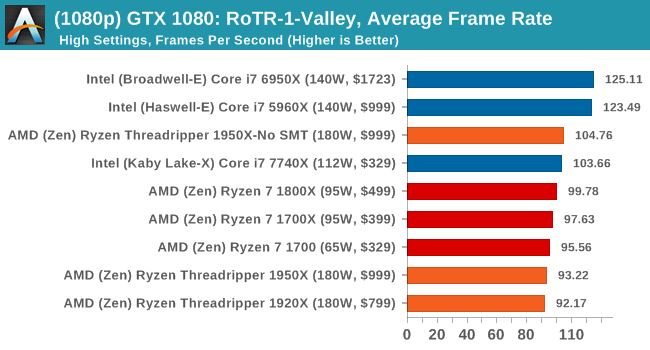
1080p

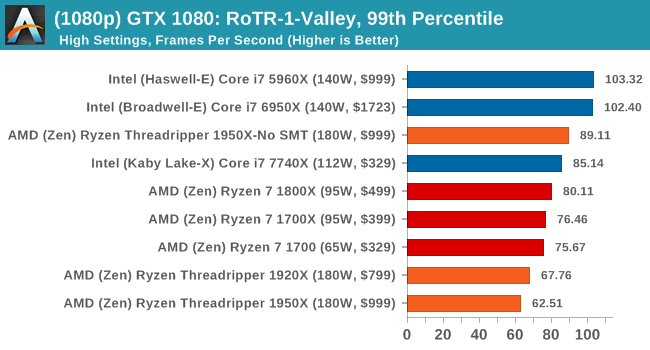
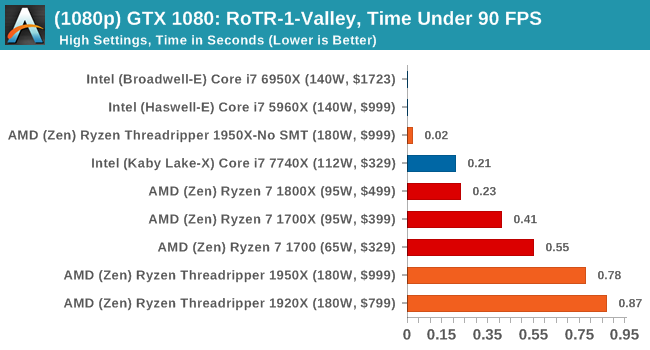
4K

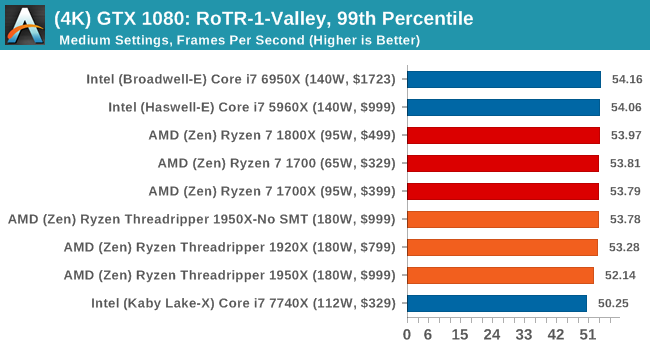
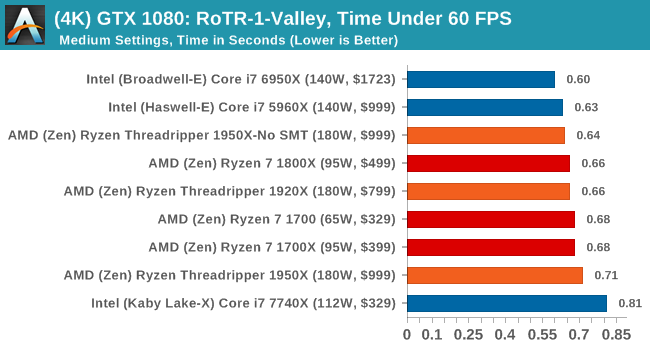
ASUS GTX 1060 Strix 6G Performance

1080p

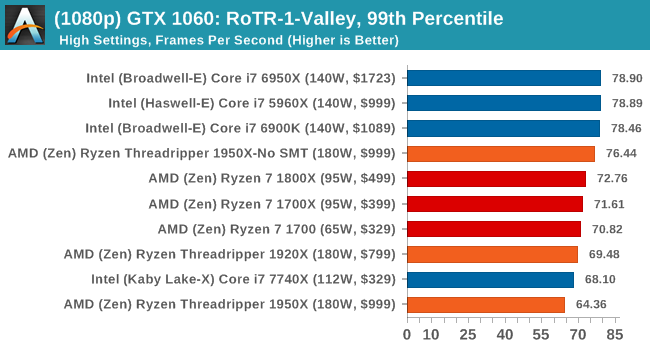
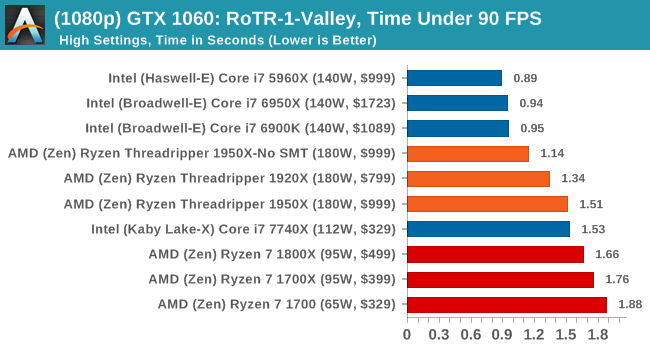
4K
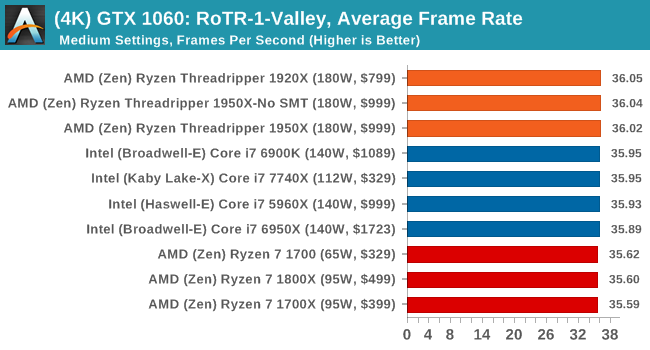


Sapphire Nitro R9 Fury 4G Performance
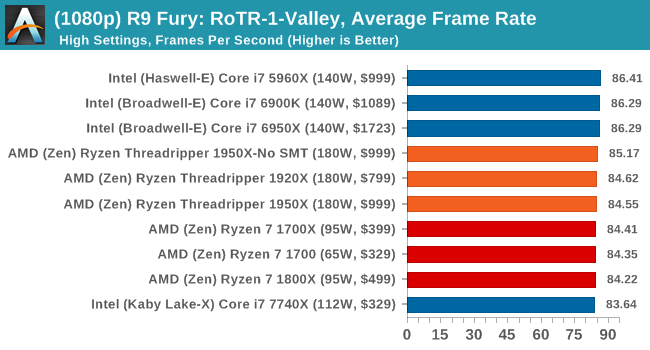
1080p

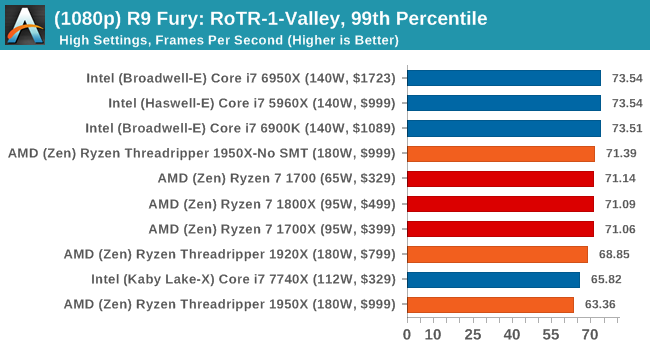
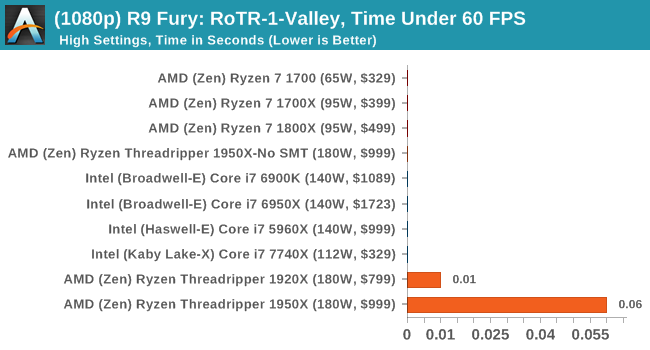
4K
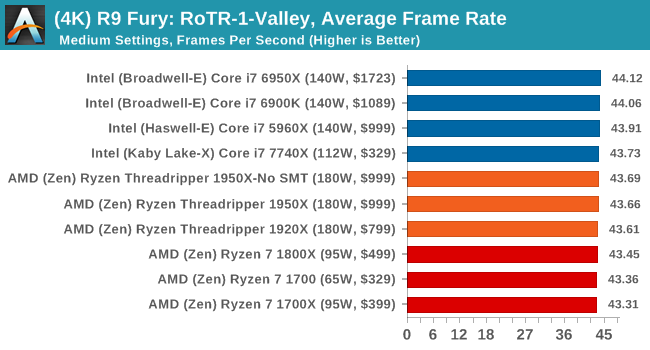
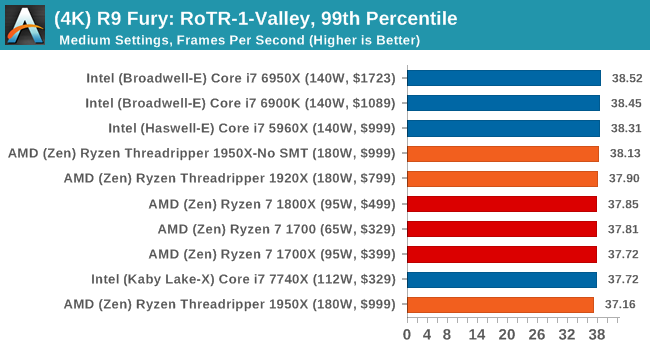
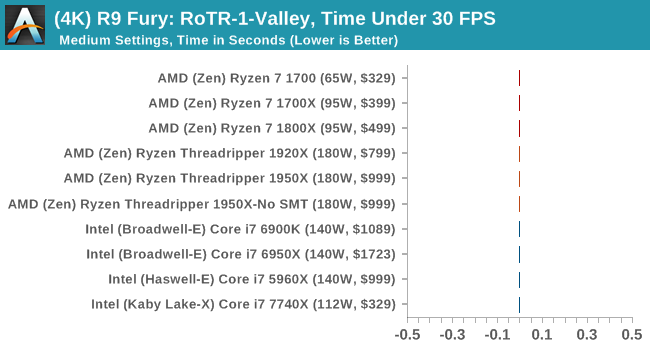
Sapphire Nitro RX 480 8G Performance

1080p

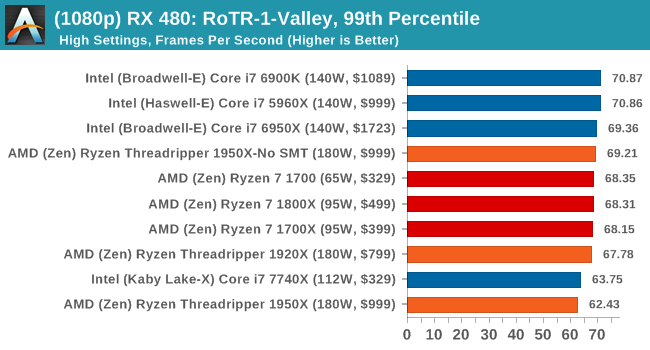
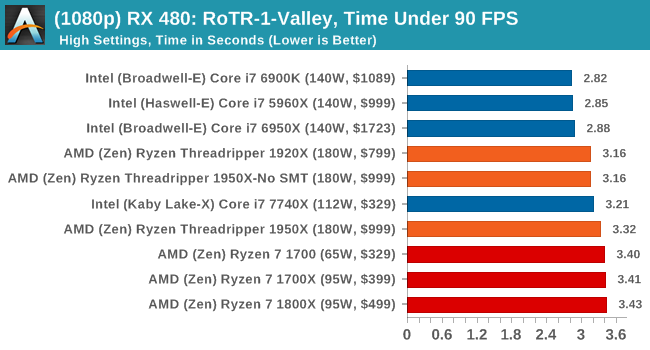
4K
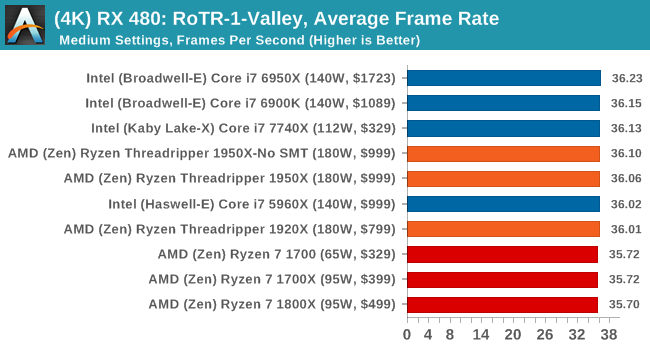
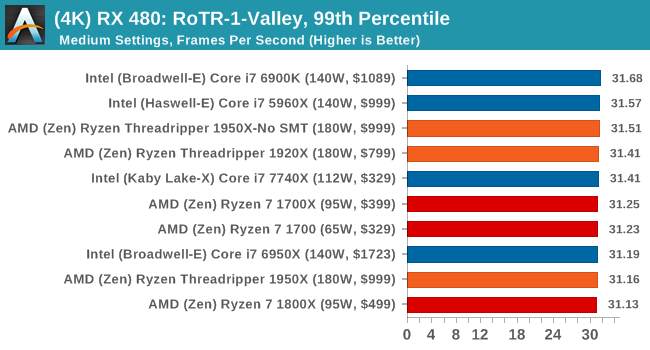
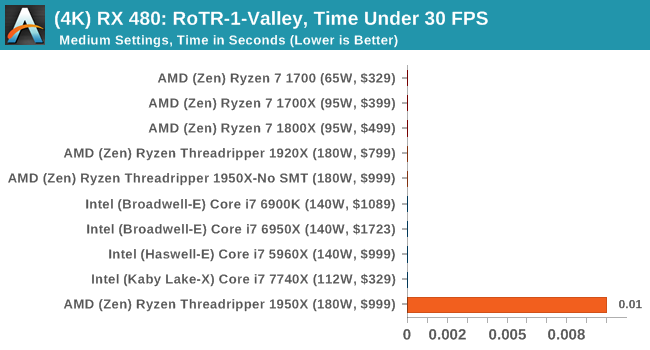
#2 Prophet’s Tomb
MSI GTX 1080 Gaming 8G Performance
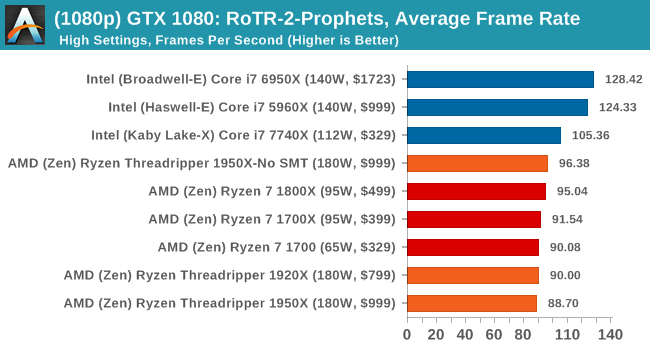
1080p

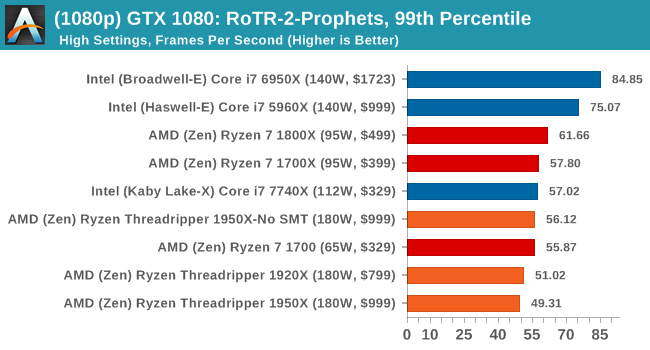
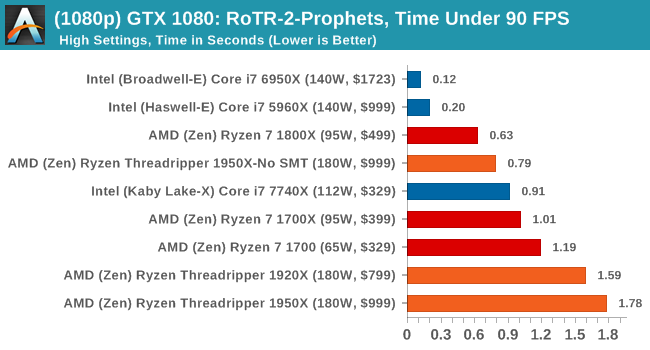
4K
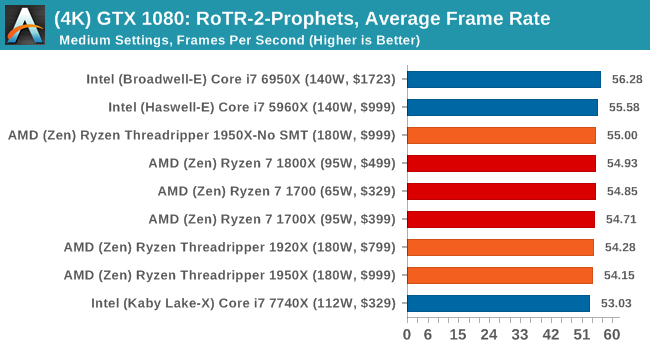
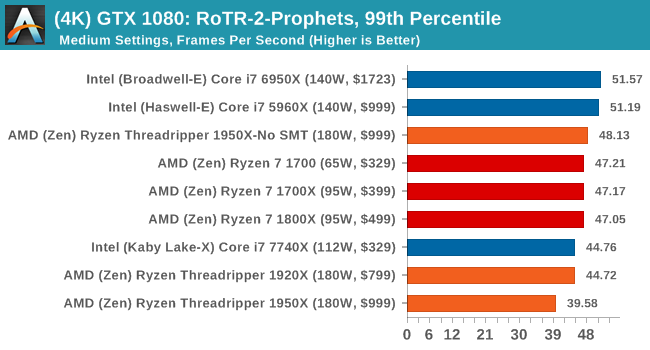
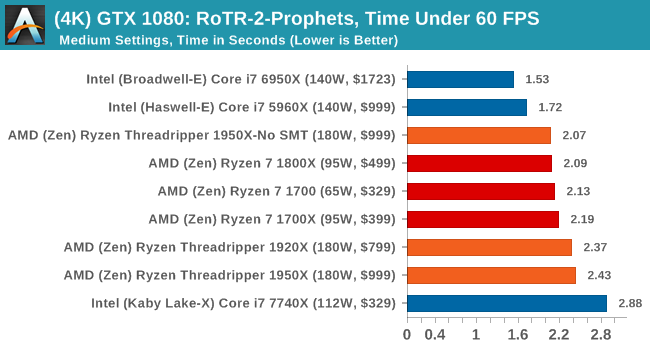
ASUS GTX 1060 Strix 6G Performance
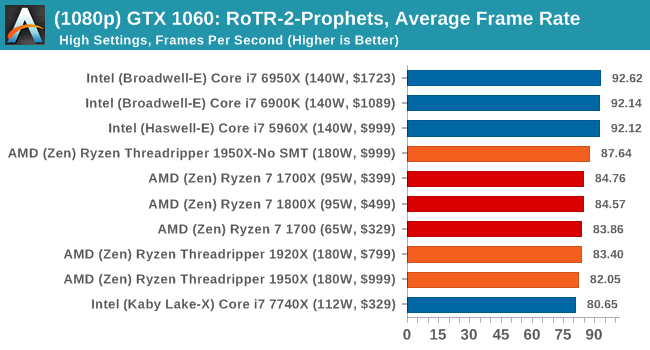
1080p

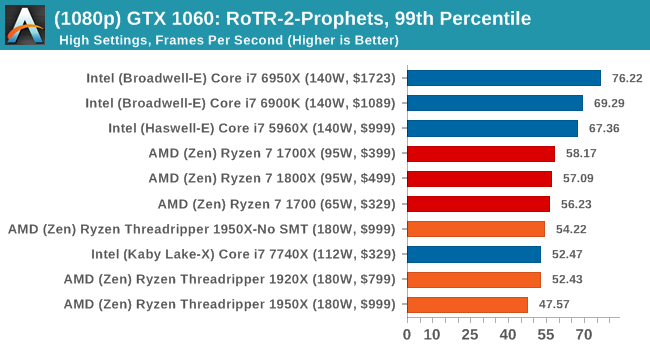
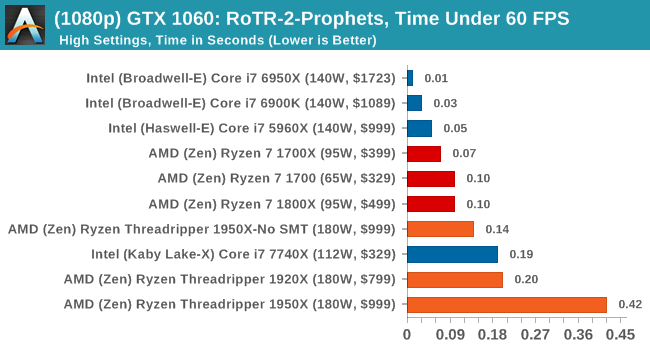
4K
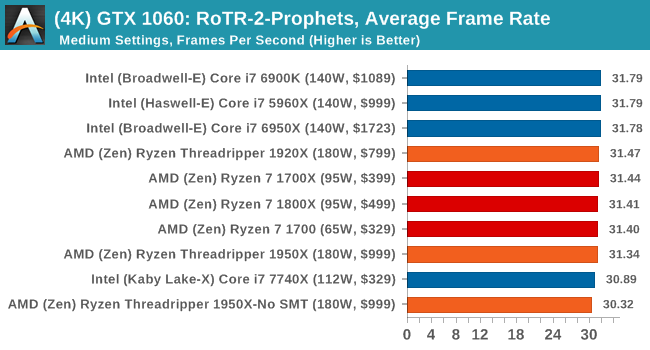

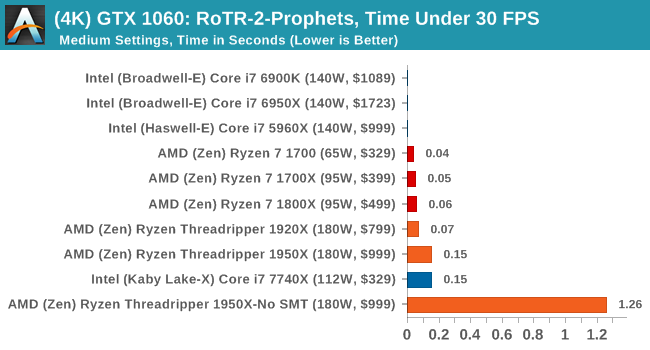
Sapphire Nitro R9 Fury 4G Performance
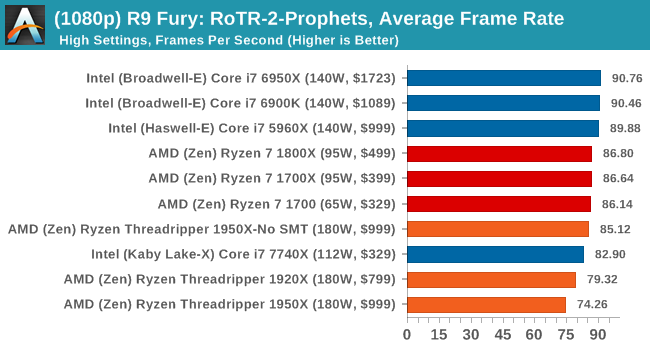
1080p

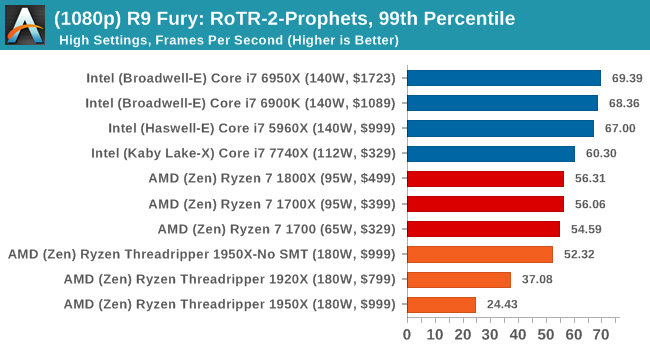
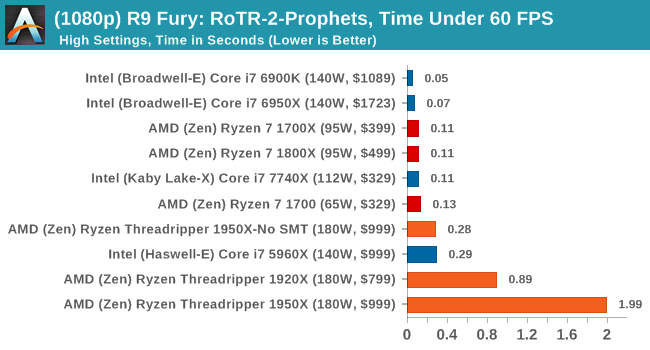
4K
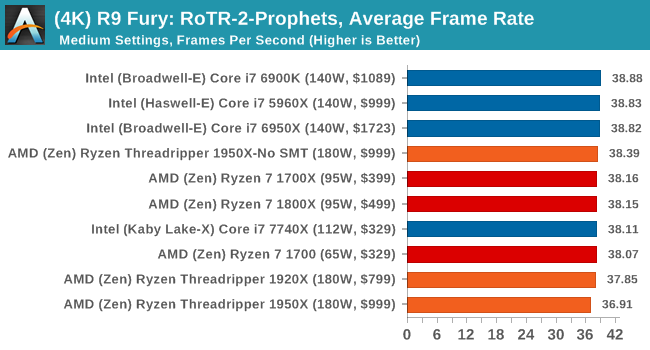
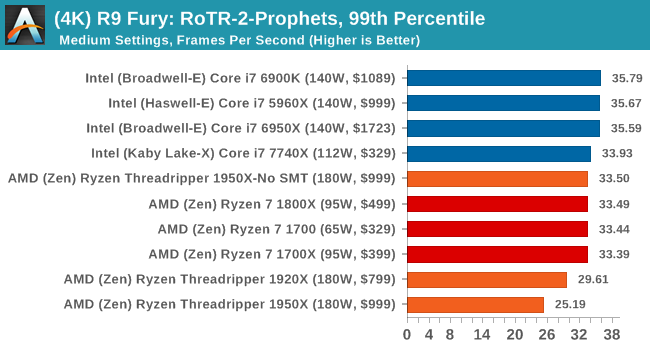

Sapphire Nitro RX 480 8G Performance
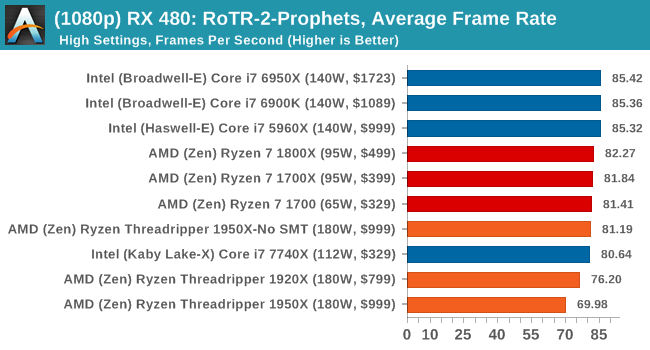
1080p

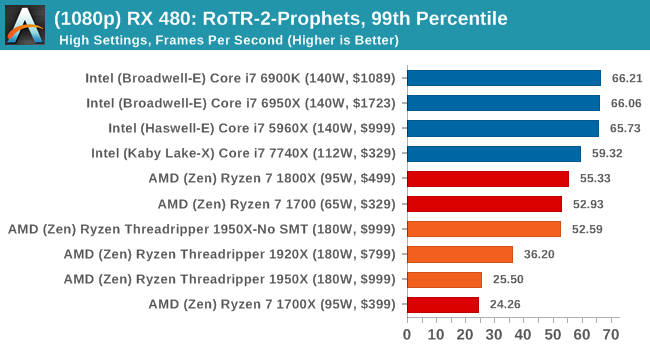
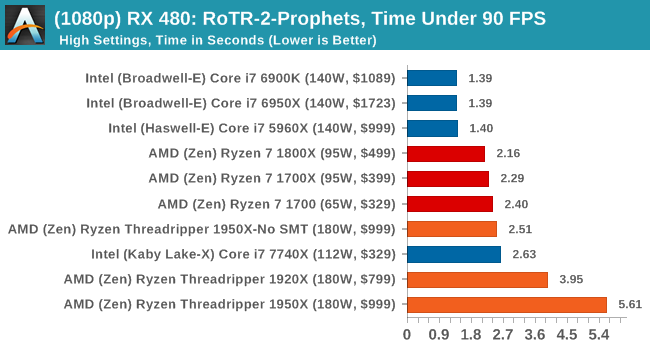
4K
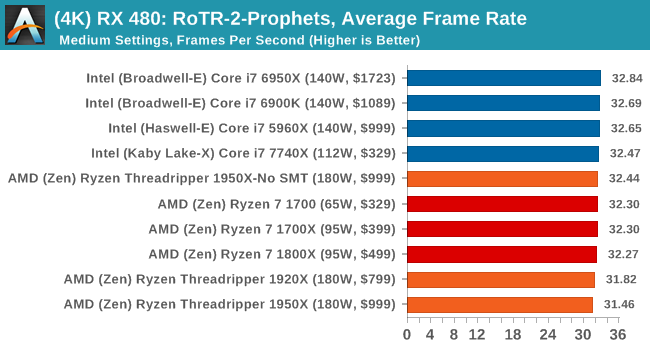
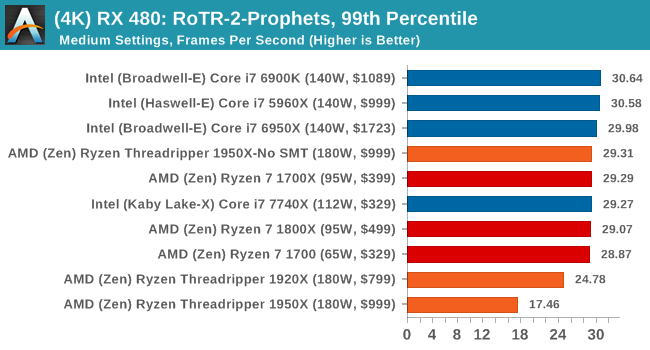
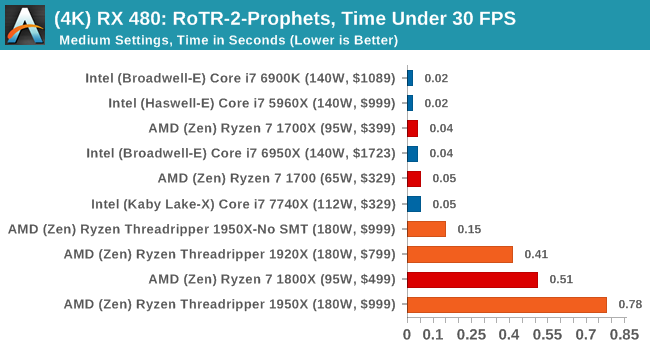
#3 Spine of the Mountain Geothermal Valley
MSI GTX 1080 Gaming 8G Performance
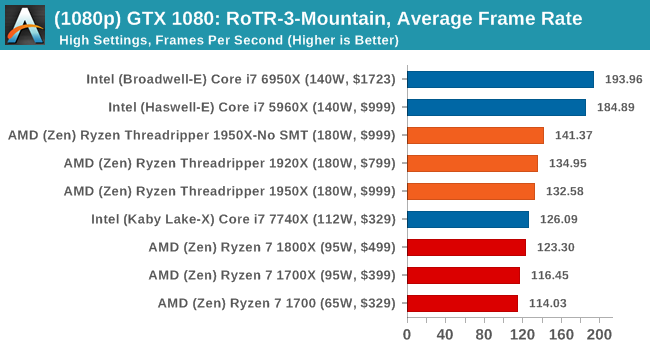
1080p

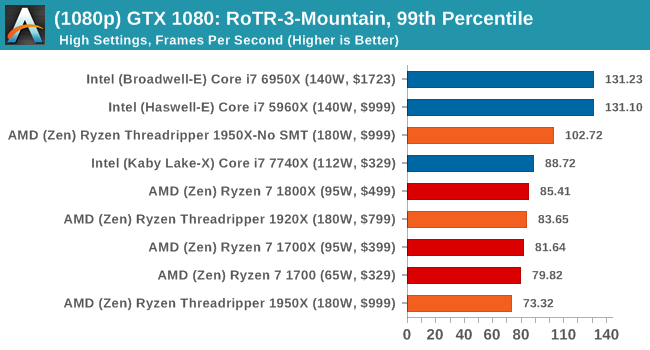
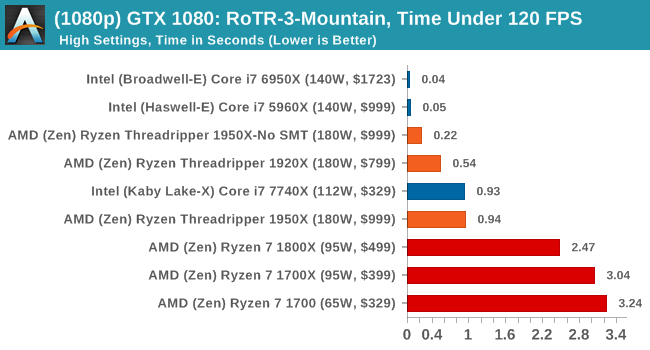
4K
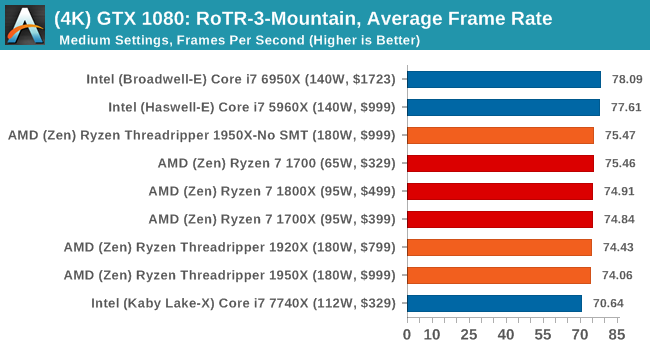
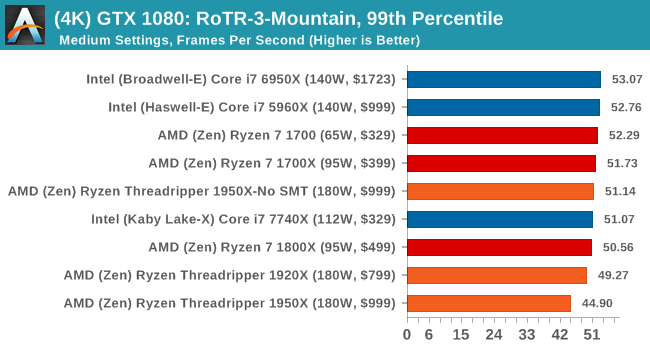
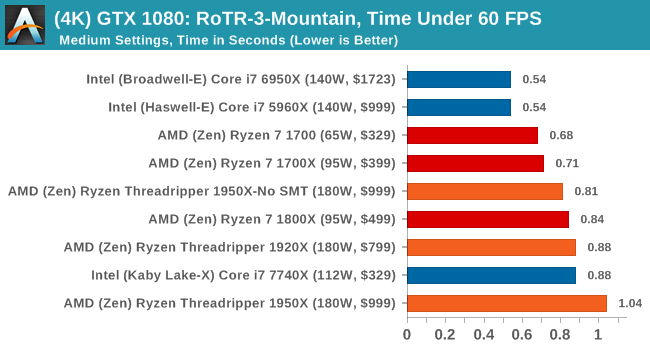
ASUS GTX 1060 Strix 6G Performance
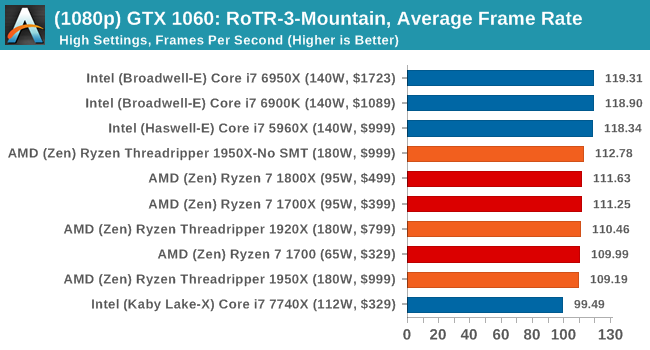
1080p

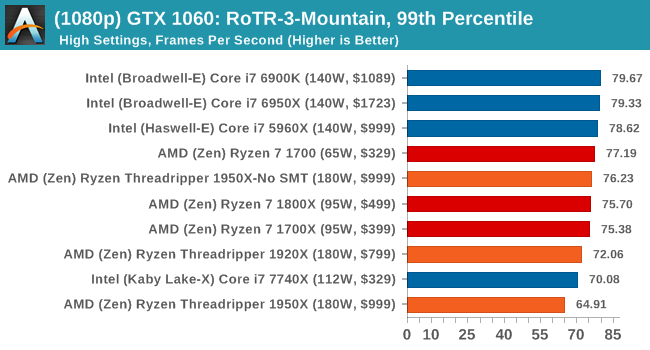

4K
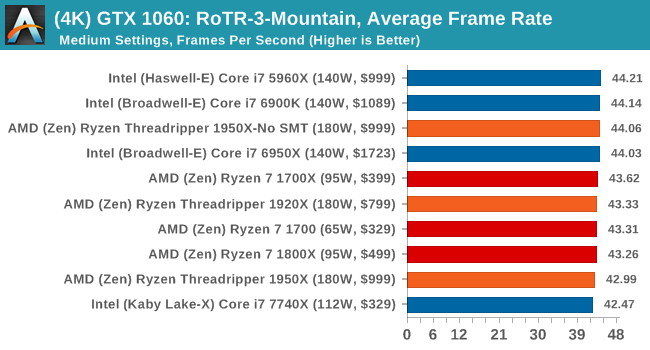
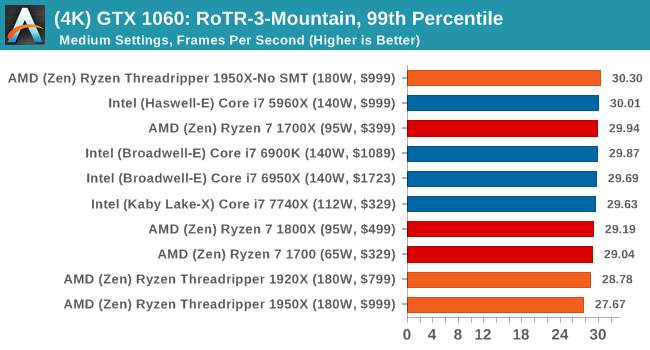

Sapphire Nitro R9 Fury 4G Performance
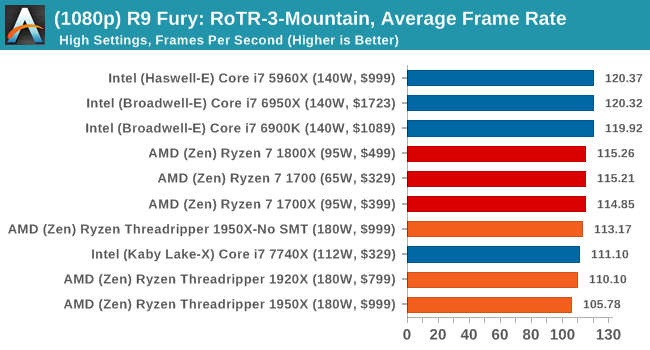
1080p


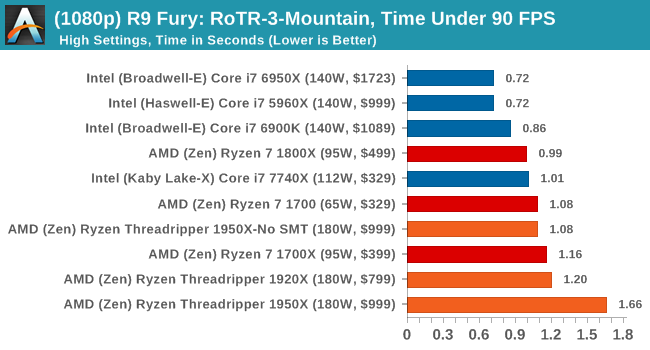
4K
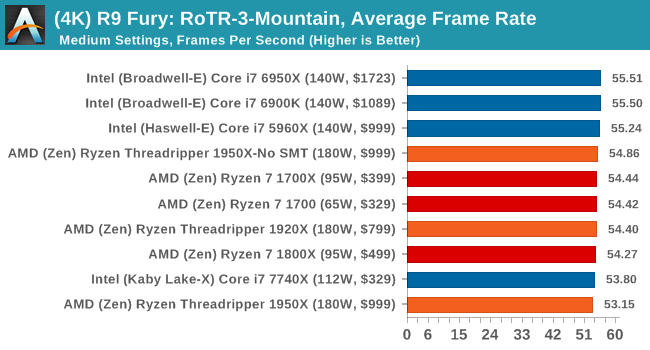
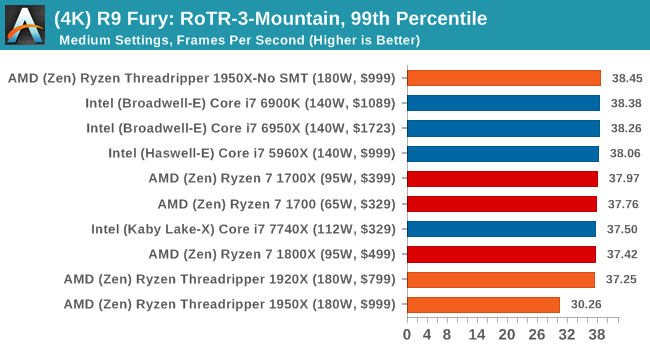
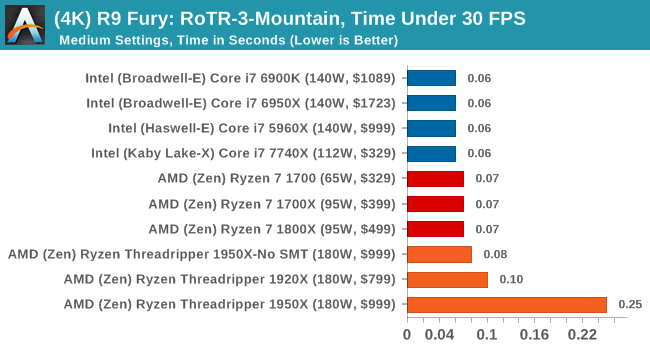
Sapphire Nitro RX 480 8G Performance
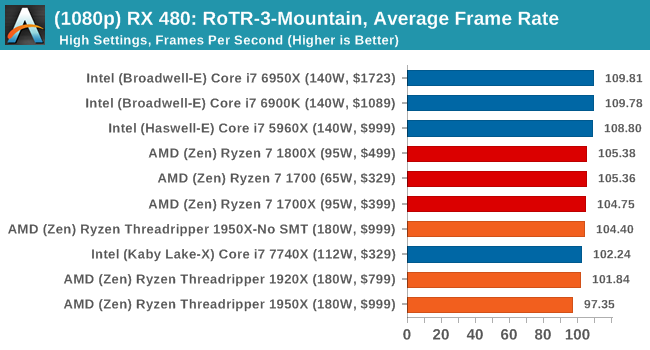
1080p

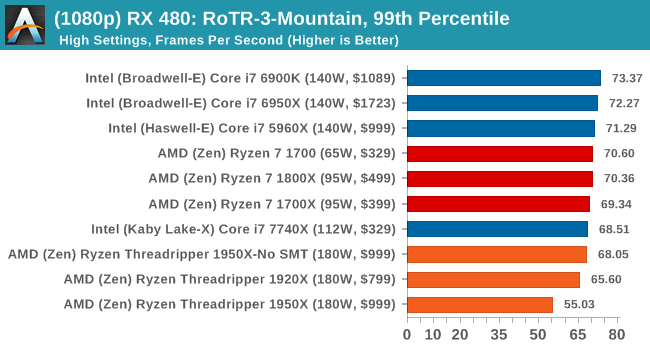
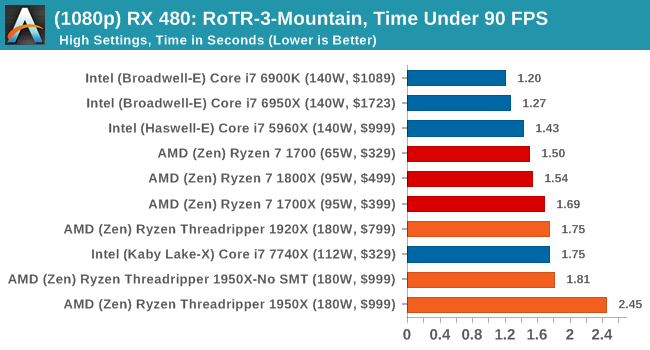
The 4K
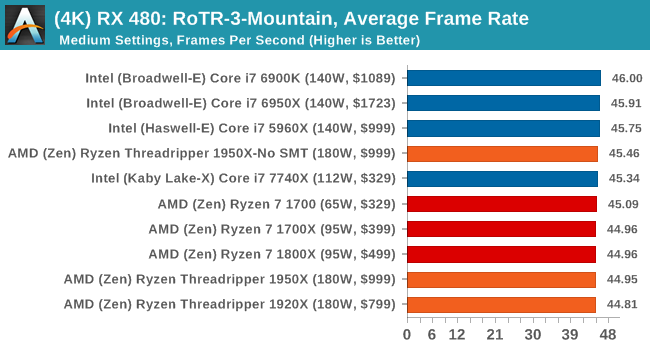
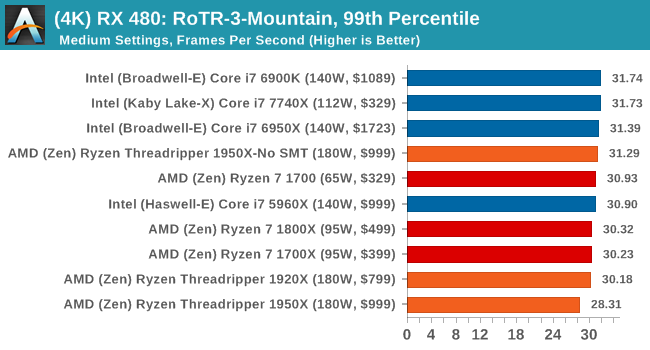
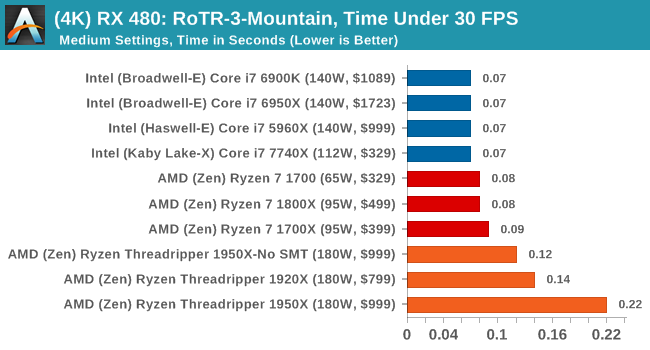
It's clear from these results that the 1950X is not the best gaming chip when in its default mode.




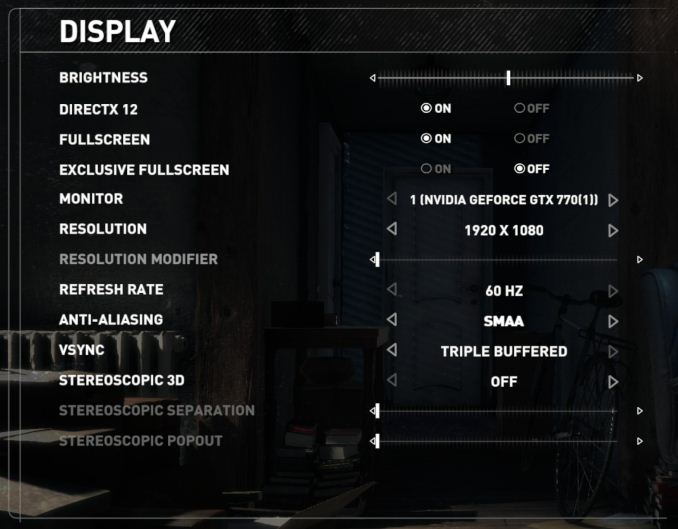











347 Comments
View All Comments
mapesdhs - Friday, August 11, 2017 - link
I haven't checked, is the TDP of a 32c EPYC a lot higher, with consequently higher clocks?JedTheKrampus - Thursday, August 10, 2017 - link
Here are a few potential benchmark ideas that I'd like to see.- Zbrush. (High resolution dynamesh/projection, Zremesher, or Decimation Master.)
- Unreal Engine 4. (Lightmap baking on a sample map, perhaps one from Unreal Tournament 4. Perhaps compilation of the engine itself.)
- XNormal. (Ambient occlusion texture baking.)
- Some sort of database benchmark for the poor sods who are doing web development.
- Some sort of video editor benchmark.
T1beriu - Thursday, August 10, 2017 - link
Luxmark OpenCL: "Though it's interesting just how cost the 10-thread Core i9-7900X gets here, likely due to a combination of higher IPC and clockspeeds."1. Typo?
2. 7900X it's not in the chart.
Ian Cutress - Thursday, August 10, 2017 - link
When we initially ran the 7900X and other CPUs, Luxmark was failing for no obvious reason. We narrowed down the reason a few weeks ago - it doesn't like running when a GTX 950 is installed for detection reasons. We have since moved to RX 460s being used during our CPU benchmark runs.gzunk - Thursday, August 10, 2017 - link
The only thing I might take exception at is the notion that prosumers have never seen NUMA before, since both the Z9-PE and Z10-PE offer it. I myself had the Z9-PE with a pair of Sandy Bridge Xeons.mapesdhs - Thursday, August 10, 2017 - link
I've lost count of how often I've read the specs pages for those mbds, etc. Talked to so many prosumers who ideally would buy one of those boards, but the XEON costs were prohibitive.SpartanJet - Thursday, August 10, 2017 - link
Well that was disappointing. Guess I'm waiting for Coffee Lake for my new gaming rig.Total Meltdowner - Thursday, August 10, 2017 - link
Yea, I'm not regretting my 1800x right now. Too bad. I had high hopes for threadripper.Let's see how drivers and BIOS updates help it, assuming they will.
Johan Steyn - Thursday, August 10, 2017 - link
Yes, you are right, TR is not the best gaming rig. Maybe this article misses again to even try to compare TR as a gaming machine. It is good to point out that Intel will be better, even though not compared to price. But this article made me think TR is made to be a gaming CPU. Ryzen is meant for that. When games support 32 threads, that will change, but not soon. This is a workstation class machine. It is almost like buying a Xeon to run games with.PS, I would not buy CL though.
mapesdhs - Thursday, August 10, 2017 - link
I hope AMD tailors its PR to make this clear. Focusing any hype on gaming where it's obviously not warranted could miss a lot of potential very suitable buyers.What does bug me though is the absence of reviewers mentioning that while Intel's 4-core CPUs do well for gaming right now, isolated to just that task, they have nothing in reserve to handle what are rapidly growing areas such as live streaming of games. GN showed a huge difference in viewer experience for game streaming between a 1700 and a 7700K.